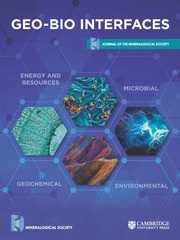Meet GBI’s New Principal Editor- Professor Liang Shi.
Please could you tell us about your research background and interests?
I am a professor at Department of Biological Sciences and Technology, School of Environmental Studies, China University of Geosciences-Wuhan (CUG-Wuhan). I am also affiliated with the State Key Laboratory of Geomicrobiology and Environmental Changes at CUG-Wuhan. As a geomicrobiologist, I investigate the molecular mechanisms underlying microbial extracellular electron transfer. We human breath air during which electrons are transferred to oxygen in the air. Because oxygen can enter human cells, the electron transfer during oxygen breathing occurs inside the cells. Different from oxygen breathing, a diverse groups of microorganisms breath rocks. Since rocks cannot enter microbial cells, the electrons are transferred from inside microbial cells to outside rocks during rock breathing. In addition to rock breathing, some microorganisms eat rocks as their food during which electrons are transferred from outside rocks into microbial cells. Furthermore, one species of microorganism can transfer electrons directly to another species of microorganism when they grow together. My research focuses on identifications and characterizations of microbial constituents that mediate electron transfers between microorganisms and rocks as well as between different species of microorganisms.
Microorganisms capable of extracellular electron transfer are directly involved in global biogeochemical cycling of earth elements, such as carbon, nitrogen, sulfur, iron and iodine. They can also be used for bioremediation of environmental contaminants, biomining of low grade ores with gold or copper, and bioenergy production.
What developments in the geo-biosciences field do you find exciting?
One exciting development is the interactions between biological and chemical reactions during biogeochemical cycling of earth elements. Redox cycling of iodine is a very good example. Iodate and iodide are the two major inorganic forms of iodine found in environment. Iodate can be reduced to iodide biotically. Additionally, iodate can also be reduced to iodide abiotically by the ferrous iron and sulfide, which are the products of microbial reductions of ferric iron and sulfate, respectively. Furthermore, ferrous iron reacts with oxygen to produce reactive oxygen species that abiotically oxidize iodide to iodate. Thus, in nature, iodine redox cycling is driven by the interactions between biological and chemical reactions and is also coupled to iron and sulfur redox cycling.
Another is the interactions among different groups of microorganisms during biogeochemical cycling of earth elements. In nature, microorganisms seldomly live by themselves. Different groups of microorganisms constantly interact with each other and form microbial communities. For example, one type interaction between bacteria and archaea produces greenhouse gas methane, while another type interaction between bacteria and archaea burns off methane for sulfate reduction. These dynamic interactions between bacteria and archaea propel global biogeochemical cycling of carbon and sulfur.
What motivated you to become one of the Principal Editors for Geo-Bio Interfaces?
My research background and interest fit the aim and scope of Geo-Bio Interfaces very well. Geo-Bio Interfaces aims to answer fundamental and emerging questions in geoscience and bioscience, by exploring contemporary scientific disciplines and the interconnection between them. The journal covers four primary spheres of academic interest that intersect with the geo- and biosciences: biological (including but not limited to microbial systems), environmental, geochemical (organic and inorganic), and energy and resources. I have 20+ years of research experience in geomicrobiology that is at the interface between geology and microbiology. Over last 20 years, it becomes increasingly clear that microorganisms play vital roles in biogeochemical cycling of earth elements, in controlling the fate and transport of contaminants in environment and in energy production. Despite tremendous progress being made in this emerging research field, many crucial questions are unanswered and key knowledge gaps remain. I am motivated by these questions and knowledge gaps and believe that Geo-Bio Interfaces could contribute to addressing these crucial questions and bridging these key knowledge gaps.
Why should authors publish in Geo-Bio Interfaces?
Geo-Bio Interfaces is a Gold Open Access journal that publishes research articles, reviews, and rapid communications. It is also an official journal of the Mineralogical Society. By rapidly disseminating high-quality, broadly relevant scientific results, Geo-Bio Interfaces furthers the course of modern geoscience and accomplishes the purpose of the Mineralogical Society. Moreover, the members of editorial board in Geo-Bio Interfaces are from all over the world and they are the leading experts in their respective research disciplines. Their diverse research backgrounds and in-depth scientific knowledges would help the authors publish their impactful works in Geo-Bio Interfaces. The editorial staffs of Cambridge University Press are also extremely professional, which help streamline the publication processes.
Can you please tell us about your vision for Geo-Bio Interfaces?
As one of the Principal Editors, I would like to work with other Principal Editors to steer Geo-Bio Interfaces toward the leading journal that advances science of this interdisciplinary research field. As a new journal, Geo-Bio Interfaces has an excellent start. Less than six months, the journal has published 10 articles with more than 3000 views. I would like to keep this momentum going. Furthermore, I also expect Geo-Bio Interfaces to be a world renowned journal that reports insightful observations, groundbreaking discoveries and novel ideas from researchers around world.
Geo-Bio Interfaces is an official journal of the Mineralogical Society. It aims to answer fundamental and emerging questions in geoscience and bioscience, by exploring contemporary scientific disciplines and the interconnection between them.
The journal covers four primary spheres of academic interest that intersect with the geo- and biosciences: biological (including but not limited to microbial systems), environmental, geochemical (organic and inorganic), and energy and resources.







